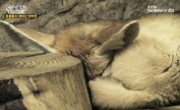Gaesung’s Gong house enjoyed economic growth under Gong Eung-gyu(1857∼1933) during late Korean Empire era. He made money doing business outside Gaesung, and after returning to his hometown invested in ginseng industry and started running ginseng f...
http://chineseinput.net/에서 pinyin(병음)방식으로 중국어를 변환할 수 있습니다.
변환된 중국어를 복사하여 사용하시면 됩니다.
- 中文 을 입력하시려면 zhongwen을 입력하시고 space를누르시면됩니다.
- 北京 을 입력하시려면 beijing을 입력하시고 space를 누르시면 됩니다.

근대 개성 공씨가(孔氏家)의 삼포 경영과 자본 전환 = Ginseng Field Management and Capital Contingent of Gong House in Modern Gaesung
한글로보기https://www.riss.kr/link?id=A105676028
- 저자
- 발행기관
- 학술지명
- 권호사항
-
발행연도
2018
-
작성언어
-
-
주제어
공응규 ; 공성학 ; 개성 ; 삼포 경영 ; 자본 전환 ; Gong Eung-gyu ; Gong Sung-hak ; Gaesung ; ginseng field management ; capital contingent
-
KDC
900
-
등재정보
KCI등재
-
자료형태
학술저널
- 발행기관 URL
-
수록면
303-339(37쪽)
- DOI식별코드
- 제공처
- 소장기관
-
0
상세조회 -
0
다운로드
부가정보
다국어 초록 (Multilingual Abstract)
Gong Sung-hak directly cultivated seed ginseng, so as to secure its production, and actively supported ginseng policies of the colonial administration. Such measures indeed contributed to overcoming difficulties. He eventually became the top person in Gaesung Ginseng Industry Association(GGIA). GGIA was composed of ginseng field owners and was under the control of the colonial government. Gong’s business thrived, as his fields expanded dramatically in the 1910s. The contemporary Japanese imperialism practiced ‘ginseng farming license system’, and Gong’s booming business indicates that he has adapted well to Japanese directives. Gong rose to becoming one of the wealthiest man in Korea, as he made around 150,000 won annually circa-1920. Gong Sung-hak was obviously a millionaire, but he was also interested in modern business management. In the 1910s, he co-invested with other Gaesung entrepreneurs in modern companies, which experience drove him to set up his own company in 1920s-Gaesung Brewing Stock Company. However, Gong also employed Cha-in, which was the traditional commercial technique of Gaesung people, along with his investment in modern companies. Such method met another challenge as the business suffered during the Depression. Gong Jin-hang, son of Gong Sung-hak, therefore liquidated those companies. Gong Sung-hak’s capital contingent clearly showed authentic aspects of traditional Gaesung merchants.
Through the case of Gong Sung-hak, this paper was able to ascertain that mega-owners of Gaesung ginseng fields were indeed cooperative to the doctrine of the Governer-general. However, these owners also combined ancient practices with modern ones, which facts signify that the generation of Gong Sung-hak, born around 1870s, took a transitional role in the transformation of Gaesung traders from traditional to modern.
Gaesung’s Gong house enjoyed economic growth under Gong Eung-gyu(1857∼1933) during late Korean Empire era. He made money doing business outside Gaesung, and after returning to his hometown invested in ginseng industry and started running ginseng fields. Gong’s investment volume ranked fourth in Gaesung. Thanks to economic success, Gong Eung-gyu began to gain government posts in the 1900s, thereby becoming an influential figure in Gaesung community. Late 1900s witnessed a serious crisis in Gaesung’s ginseng industry, and Gong’s enterprise was no exception. Gong decided to pass down family business to his second son Gong sung-hak(1879∼1957), in order to combat such challenge.
Gong Sung-hak directly cultivated seed ginseng, so as to secure its production, and actively supported ginseng policies of the colonial administration. Such measures indeed contributed to overcoming difficulties. He eventually became the top person in Gaesung Ginseng Industry Association(GGIA). GGIA was composed of ginseng field owners and was under the control of the colonial government. Gong’s business thrived, as his fields expanded dramatically in the 1910s. The contemporary Japanese imperialism practiced ‘ginseng farming license system’, and Gong’s booming business indicates that he has adapted well to Japanese directives. Gong rose to becoming one of the wealthiest man in Korea, as he made around 150,000 won annually circa-1920. Gong Sung-hak was obviously a millionaire, but he was also interested in modern business management. In the 1910s, he co-invested with other Gaesung entrepreneurs in modern companies, which experience drove him to set up his own company in 1920s-Gaesung Brewing Stock Company. However, Gong also employed Cha-in, which was the traditional commercial technique of Gaesung people, along with his investment in modern companies. Such method met another challenge as the business suffered during the Depression. Gong Jin-hang, son of Gong Sung-hak, therefore liquidated those companies. Gong Sung-hak’s capital contingent clearly showed authentic aspects of traditional Gaesung merchants.
Through the case of Gong Sung-hak, this paper was able to ascertain that mega-owners of Gaesung ginseng fields were indeed cooperative to the doctrine of the Governer-general. However, these owners also combined ancient practices with modern ones, which facts signify that the generation of Gong Sung-hak, born around 1870s, took a transitional role in the transformation of Gaesung traders from traditional to modern.
동일학술지(권/호) 다른 논문
-
1980년대 초반 전두환 정부의 사회정화사업 시행과 지역감시체계 재편 : 지역정화위원회의 활동을 중심으로
- 역사문제연구소
- 유정환 ( Yoo Jeong Hwan )
- 2018
- KCI등재
-
- 역사문제연구소
- 문민기 ( Moon Min Ki )
- 2018
- KCI등재
-
- 역사문제연구소
- 정무용 ( Jeong Moo Yong )
- 2018
- KCI등재
-
미군 ‘위안부’의 약물 중독과 우울, 그리고 자살 : ‘위안’하는 주체의 (비)일상과 정동 정치
- 역사문제연구소
- 김은경 ( Kim Eun Kyung )
- 2018
- KCI등재




 KISS
KISS







